Manual machine gun "Bran"
Back in the middle of the 20-ies, the British military leadership announced a competition for a machine gun, which was supposed to replace the heavy "Lewis", but none of the British, French, Danish, Czech and Swiss systems presented were selected. On tests 1932, the first place was taken by the Vickers-Berthier, however, the new machine gun was designed to replace both the easel Vickers and the manual Lewis, and the Vickers-Berthier could not satisfy the intensive firing from the machine, therefore he went into service only in the Indian parts.
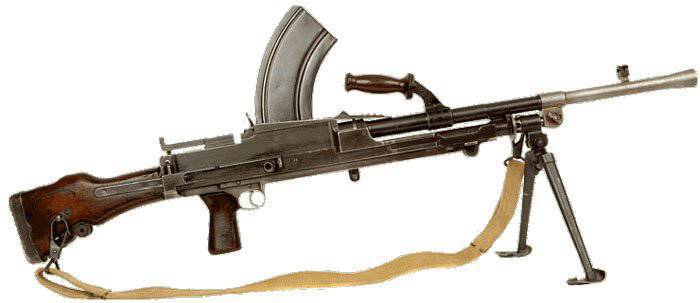
Since the British military attache in Prague gave positive reviews, the 7,92-mm ZB-30 “Zbroevka Brno” machine gun of Czech production got into the competition, which aroused the greatest interest of those. Commission Colonel Ridley. The modernization, carried out by Czech designers Anton Marek, Emanuel and Vaclav Holekami at the request of the British, gave the model ZB-33 (ZGB33 - Zbrojovka, Great Britain, 1933) for the cartridge .303 “British service”. Since the cartridge had a protruding lip, and cordite powder gave completely different pressure characteristics in the barrel bore and clogged the venting paths, the power supply system was changed (in particular, they introduced a sector-shaped magazine, increasing the capacity to 30 cartridges). blowing gas chamber shifted the vent back. Accordingly changed the gas piston and regulator. To mitigate recoil introduced buffer.
In England, the ZB-33 tests were successful, and tripod machines were also obtained with machine guns that allowed anti-aircraft fire. We decided to adopt the data of the machine gun and organize production in the UK. The machine gun ZB-33 chambered for "Mauser" caliber 7,92-mm was also supplied to the army of Czechoslovakia (Vz.34), to Lithuania, Bulgaria, in calibers .303 and 7,92 - to Libya and Egypt.
In May 35 of the year “Zbroevka Brno” and the British government signed an agreement on the licensed production of a machine gun. Technological refinement in the city of Enfield at the Royal Small Arms plant (Enfield Lock, MidLessex) was delayed until September 1937 of the year. The name of the machine gun was made by the first syllables of the cities of Brno and Enfield (BRno-ENfield - BREN).
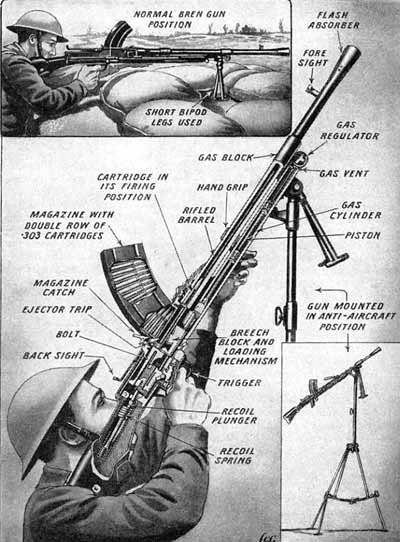 In August, the 1938 of the year adopted the first modification, which received the designation MK 1. This machine gun as a whole repeated the prototype, but the butt was equipped with a folding humeral support, added a handle for the left hand. This butt did not receive special recognition, therefore, while simplifying the design, they were removed first. Mass production was deployed in the 1939 year, after the attack on Poland, Germany, the release was brought to 400 units per week. At the end of the year, the British infantry was equipped with “Bran” machine guns.
In August, the 1938 of the year adopted the first modification, which received the designation MK 1. This machine gun as a whole repeated the prototype, but the butt was equipped with a folding humeral support, added a handle for the left hand. This butt did not receive special recognition, therefore, while simplifying the design, they were removed first. Mass production was deployed in the 1939 year, after the attack on Poland, Germany, the release was brought to 400 units per week. At the end of the year, the British infantry was equipped with “Bran” machine guns.By June, the 1940 in the army numbered more than 30 thousand machine guns Mk 1 "Bran". Since a large number of these machine guns was left at Dunkirk, "Bran" and the prototype ZB-26 got into service in the Wehrmacht. The British army, in preparation for repelling the invasion, had only 2,3 thousand "Brans". The Royal Small Arms Company tried with great effort to increase production, trying to simplify production. By the year 1943 brought to the level of 1000 machine guns per week.
The work of automation was based on the removal of powder gases from the barrel. The replaceable barrel and receiver were connected with a dry-threaded connection using a rotary coupling of the receiver and the handle. It took about 7 seconds to replace the barrel. The rearrangement of the regulator could be done without disassembling the machine gun, with the tip of the bullet of the cartridge in a few seconds. The barrel bore was locked by skewing the bolt. The main difference from the prototype (machine gun ZB-30) was the movement of the barrel and receiver during the shot back along the trigger frame. Thus, the recoil action was partially offset. The movement of the moving part was extinguished by a shock absorber returning the rolled parts to the forward position.
The shot was carried out from the rear whisper. The translator-fuse box had three positions: the front (“30” or “A”) - “continuous fire”, the middle (“0” or “S”) - “fuse”, back (“1” or “R”) - "Single fire". The fuse disengaged the trigger and the sear using an uncoupler, the protrusion of which held the gas piston rod out of the cutout.

Since the magazine was mounted on top of the front sight and a sector-based sight with a diopter, the eccentric regulator was shifted to the left. In the stowed position, the receiver windows were closed with the help of sliding covers. The sight had a notch from 200 to 2000 yards (from 182,88 to 1828,8 m) in 50 steps. The maximum firing range is 3 thousand meters, the effective range during firing at ground targets is 650 m, at air targets 550 m. It was recommended to fire in short bursts (five shots). When the rate of fire was equal to 120 gunshots per minute, it was recommended to replace the barrel after 300 shots (which was equal to 10 shopping) or after 2,5 minutes. Disassembly and maintenance of the machine gun were fairly simple.
In addition to the spare barrel, the machine gun also initially included a 12 kilogram tripod machine, which gave a limited sector of shelling after the infantry battalions were reorganized and old Vickers machine guns were withdrawn from them, which was weapons offices, tried to entrust the task of a single machine gun. This attempt was unsuccessful, and the preparation of a large number of machines was a waste of money. The machine gun included 25 filled stores - one mounted on the weapon, the rest were placed in two steel boxes. To speed up the filling of the stores with cartridges there was a lever equipment. In battle, the stores were transferred by the machine-gunner and the assistant in the bags. In addition to the 30 box magazine, there was a multi-row disk magazine on 100 radially placed cartridges. The curb weight of the box magazine was 1,25 kg, the disc weight was 5,5 kg. Disk store was mainly used on anti-aircraft installations. The shops were made by Austin Motor Works and Birmingham Small Arms. Since the .303 “British” cartridge was often skewed or clinging, it was recommended to load the 28-29 magazine with cartridges - this practice was often used in automatic weapons for cartridges with a protruding lip, the stores “didn’t equip” for several cartridges.
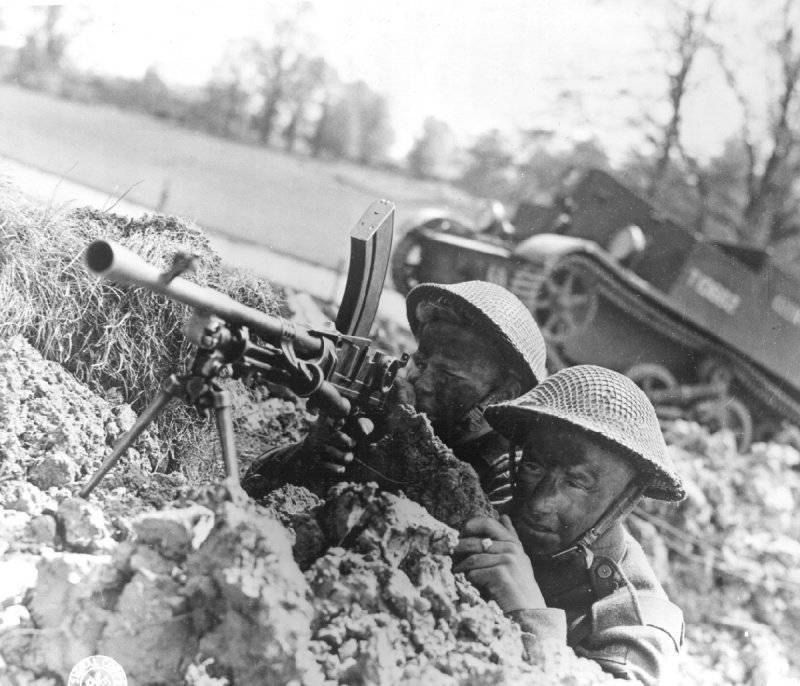
Production of the machine gun "Bran" Mk 1 was metal intensive and technologically complex. Only for the production of the receiver was needed about 550 measurements and 270 operations, and the part weighing up to 2 kilogram was obtained from the billet mass 10 kilogram - for wartime such metal losses were very sensitive. In this regard, adopted in June 41-th year, "Bran" Mk 2 differed acceleration and simplification of production. The new modification received a simplified sector sight, a single assembly “flame arrester - front sight - gas regulator” made of stainless steel was replaced with three different parts, and only the gas regulator was made of stainless steel. The butt had no additional handle, instead of the telescopic bipod there were unregulated ones, the loading handle was awkward, and there were no grooves on the receiver for relief. As a result of data processing machine gun weight increased to 10,52 kg with 10,04 kg. In addition, the designers abandoned the machine gun for the Bran machine gun.
The British infantry battalion for 1943 had about 50 "Bran" machine guns - one each in the squads, in a platoon of light armored personnel carriers, in a staff company, and four twin anti-aircraft mounts. The Bran machine gun was used as anti-aircraft guns of self-propelled guns, armored vehicles and tanksput on ships, boats, cars.
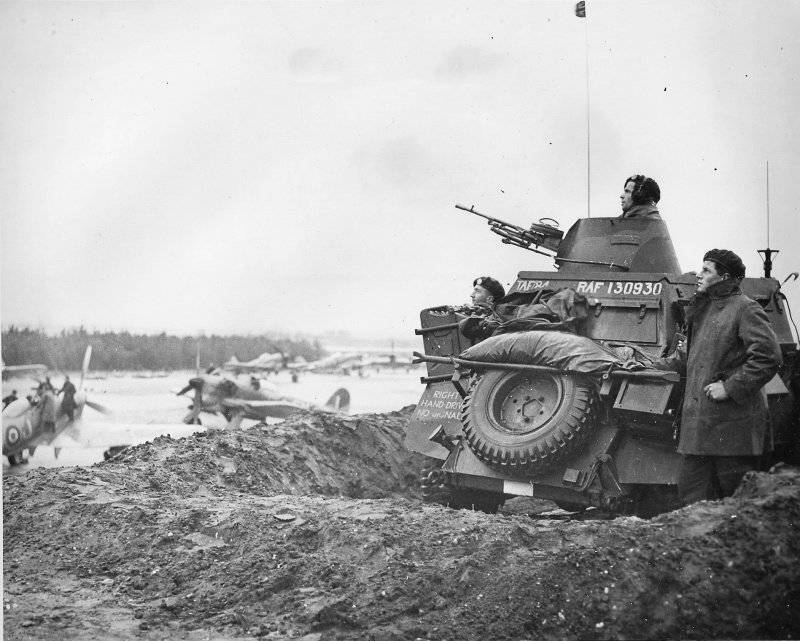
In July, the 44 of the year was adopted by the machine guns "Bran" Mk 3 and Mk 4 - which were modifications of Mk 1 and Mk 2, respectively. The barrel of the 3 Mk was shortened to 562 millimeters, and the mass was reduced to 8,76 kg. Machine gun Mk 4 had a shorter barrel and a smaller weight. The weight was 8,65 kg - the minimum allowed when shooting with an .303 cartridge. These shortened modifications were supposed to be used in the jungle, but they were used on all fronts.
In total, until the end of the war, more than 300 thousand machine guns “Bran” of various modifications were produced. Marking machine gun placed on the right side and included the inscription BREN Mk XX.
In the critical 40 year, in the countries of the Commonwealth, production of “Bran” was started under the license of Royal Small Arms. In Canada, production was established in Toronto at the enterprise “John Inglis Company”, in Australia - in the city of Lithgow at the factory “Small Armz”. By 1942, these companies issued 150 machine guns a week under the British cartridge. In 1942-1943, John Inglis produced approximately 60% of all Brans for the Commonwealth and for export, including 7,92-mm modification for China. The Canadian "Bran" Mk 1 had a separate flame arrester, a gas regulator and a fly; on the machine guns chambered for "Mouser" on the receiver there was an inscription "7,92".
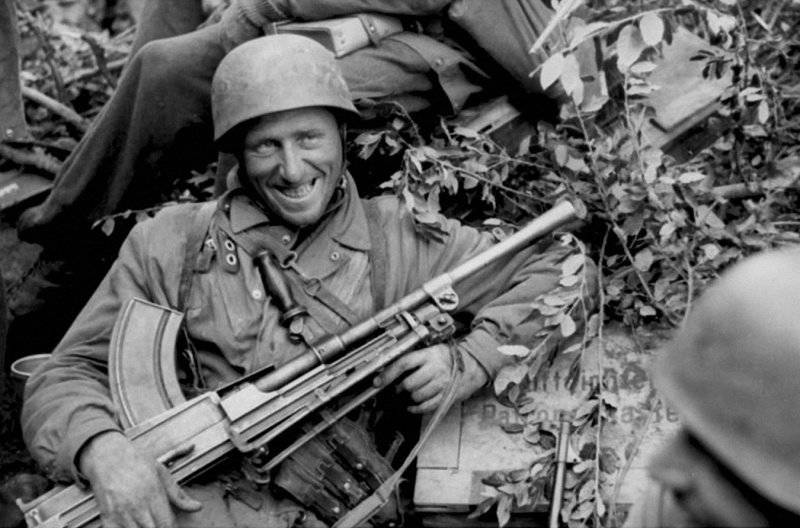
Machine guns "Bran" caliber. 303 were in service in the countries of the Commonwealth, as well as under the British flag in foreign formations (Belgian, Dutch, Polish, French, Czech). Reliable, having good accuracy and relatively soft returns, which made it easier to control, "Bran" was among the best light machine guns of the Second World War. If in terms of operational and combat characteristics this is justified, however, in terms of its production and economic indicators, the Bran machine gun lags significantly behind other types of similar weapons of its time. After the adoption of a single 7,62-millimeter NATO cartridge machine guns had to perform under it (modification "Bran" 14) - for this came in handy Canadian 7,92-mm modification "Chinese contract". Various post-war modifications of the "Brans" are used to date.
The order of unloading machine gun "Bran":
Disconnect the store. Pull the charging handle back through the window of the magazine slot to inspect the chamber. Press the trigger while holding the charging handle, return the charging handle forwards. Sliding back the cover of the shop window to close it. Sliding back the cover of the lower window of the receiver for ejection of the sleeves to close it.
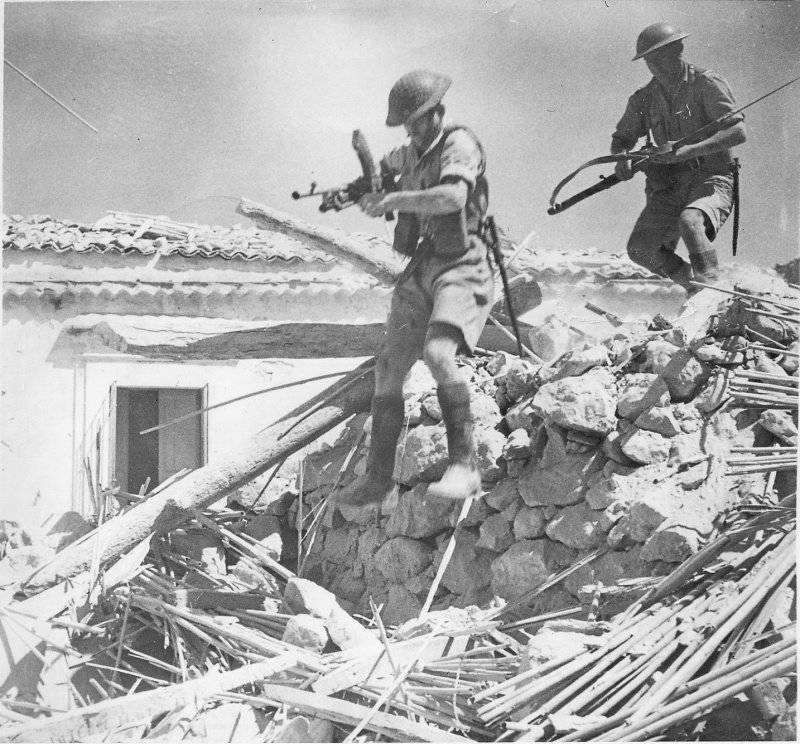
The order of partial disassembly of the machine gun "Bran":
1. Unload a machine gun.
2. By pressing the latch of the coupling and turning its lever upward, separate the barrel.
3. Separate the regulator from the gas chamber, for which it is necessary to turn the regulator until its tips coincide with the longitudinal window of the gas chamber.
4. Pull the trigger frame to the right and separate the trigger frame and butt.
5. Turn down the barrel coupling lever, remove the bolt carrier and bolt from the receiver.
6. Separated from the bolt carrier shutter.
7. Separated from the receiver bipod.
To assemble all the actions needed to be performed in the reverse order.
Specifications machine gun "Bran" Mk 1:
Cartridge - .303 "British Service" (7,7x56 R);
The mass of weapons - 10,15 kg (without cartridges);
Full weapon length - 1150 mm
Barrel length - 635 mm
Grooves - 6 right;
Barrel weight - 2,9 kg;
Initial bullet speed - 745 m / s;
Sighting range - 1829 m;
The rate of fire - 660 shots per minute;
Combat rate - 60-120 shots per minute;
The capacity of the box magazine - 30 cartridges;
Specifications machine gun "Bran" Mk 3:
Cartridge - .303 "British Service" (7,7x56 R);
The mass of weapons - 8,80 kg (without cartridges);
Full weapon length - 1087 mm
Barrel length - 566 mm
Grooves - 6 right;
Barrel weight - 2,3 kg;
Initial bullet speed - 730 m / s;
Sighting range - 1829 m;
The rate of fire - 500 shots per minute;
Combat rate - 60-120 shots per minute;
The capacity of the box magazine - 30 cartridges;
Information